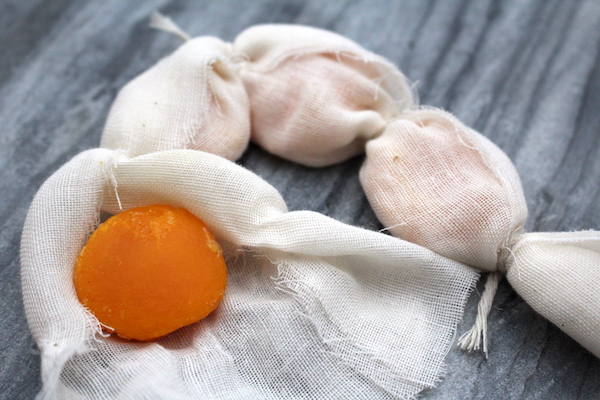With St. Patrick's Day nigh, we decided to cook a dwarven repast from Heroes' Feast: Corned Beef & Cabbage. It's also an opportunity to spotlight how different cultures express their identity through food in fantasy campaigns.


For all the references to salt, the recipe does its best to minimize your sodium intake. The butter is unsalted and the chicken broth is low-sodium, presumably because you'll add the salt yourself.
Overall, the meal was surprisingly tasty. It was spicier than I might have expected, but then we created our own pickled spice so that surely had something to do with it. Some kind of bread would go well with it (Heroes' Feast rarely mentions any sides to go with the recipes). All that said, there's a lot of meat and mostly vegetables so I'll be eating this all week for sure.

Your Turn: Is dwarven cuisine different from other meals in your campaign?
Corned Beef & Culture
It's worth pointing out that corned beef and cabbage is associated with St. Patrick's Day in the United States, but that's not necessarily the case everywhere. Cows weren't commonly bred for their meat in Ireland; that came later thanks to expanding British influence. In fact, the term "corned beef" is British:As you might imagine, tastes have changed considerably since then. Corned beef in the U.S. is actually made from brisket, a kosher cut of meat from the front of the cow. Because brisket is a tougher cut, the cooking process changes the flavor of the meat considerably to something much more tender than its predecessor. Heroes' Feast specifically recommends brisket for its recipe.The British invented the term “corned beef” in the 17th century to describe the size of the salt crystals used to cure the meat, the size of corn kernels. After the Cattle Acts, salt was the main reason Ireland became the hub for corned beef. Ireland’s salt tax was almost 1/10 that of England’s and could import the highest quality at an inexpensive price. With the large quantities of cattle and high quality of salt, Irish corned beef was the best on the market. It didn’t take long for Ireland to be supplying Europe and the Americas with its wares.
Fantasy Beef & Culture
Heroes' Feast doesn't have much to say about the recipe other than it's associated with dwarves:The recipe calls for pickled spice, which were weren't able to procure in pandemic conditions, so we instead made our own. I also overdid it on the celery (as a new chef, I'm still learning measurements). This meal takes over four hours, so it's not something you're going to whip up for your players just before they arrive to game.From the mines of the Ironroot Mountains to the halls of the Iron Hills, this savory winter repast is a favorite of dwarves everywhere. Hungry miners will blush pinker than the beef itself when their noses catch the distinct scent of coriander, allspice, peppercorns, bay leaves, thyme, and red pepper flakes wafting from a full-to-the-brim cauldron. Served in a light, tangy broth with generous helpings of boiled cabbage and doused in vinegar, this dish is sure to satisfy the sale cravings of even the saltiest dwarves (just as long as you don't forget the ale).
For all the references to salt, the recipe does its best to minimize your sodium intake. The butter is unsalted and the chicken broth is low-sodium, presumably because you'll add the salt yourself.
Overall, the meal was surprisingly tasty. It was spicier than I might have expected, but then we created our own pickled spice so that surely had something to do with it. Some kind of bread would go well with it (Heroes' Feast rarely mentions any sides to go with the recipes). All that said, there's a lot of meat and mostly vegetables so I'll be eating this all week for sure.
Where Do Dwarves Live, Anyway?
There's a reference to Ironroot Mountains in the recipe's introduction, which is in Eberron in eastern Khorvaire:Heroes' Feast also mentions the Iron Hills, eastward of the City of Irongate in Greyhawk:The Ironroot Mountains are a stretch of mountains in eastern Khorvaire, lying parallel to the Hoarfrost Mountains and along the western border of the Mror Holds. It is believed that the Ironroot Mountains have some of the richest mineral deposits in Khorvaire. The dwarves of the Mror Holds trade and mine in these mountains, but their operations tend to come under attack by the Jhorash'tar orc clans. Many clans of Jhorash'tar orcs live on the mountains, making it incredibly dangerous for wandering travelers and even more so for any dwarves.
There's nothing in either of the above wikis that explains the history of how dwarves came to create such a dish. Given the winding history of how corned beef and cabbage has come to be associated with St. Patrick's Day, a meal like this is an opportunity to tell their story, particularly of a well-traveled people who have faced a lot of hardship.The Iron Hills are a massive series of highlands extending eastward of the City of Irongate and surrounded by the United Kingdom of Ahlissa to the north and the Principality of Naerie to the south. The Iron Hills are the home of the Kingdom of the Iron Hills Dwur, ruled by King Holgi Hirsute (ml dwf LG Ftr15), who is firmly allied with Irongate. The hills produce very high grade iron ore, and several kinds of precious metals. Gnomes and humans do some of the mining in the area, but the largest and most productive mines are dwarven-run.
Your Turn: Is dwarven cuisine different from other meals in your campaign?



